Yes Maybe No Why? – A Scorecard For Your Projects

When creative teams have an opportunity to take on a new project, we often get excited and jump straight to yes without much thoughtful reflection as to why we’re saying yes. Our rationale usually includes things like:
- The vision of the project is something that excites us.
- Our skills and talents are well-matched to the project.
- It seems likely to lead to more/bigger projects.
- The client/project would be great for our portfolio.
- We like money.
- A hundred other reasons.
As soon as we start actually working on the project, reality begins diverging from the subjective vision held by each team member. Too often, we realize we may not truly have the consensus we imagined we had at the outset. Establishing that common understanding and consensus once the project is underway can be stressful and frustrating.
To help myself and the teams I work with reach that common understanding quickly and objectively, I developed a Project Scorecard in the form of a Google Sheet. You can copy it freely from here. In project after project, this scorecard has helped our creative teams:
- Establish the criteria on which we will assess the project.
- Gain a common understanding of how well we each think the project aligns with those criteria.
- Gain a common understanding of the overall importance of each criteria to each team member.
- Identify gaps in the team’s vision of the project and their priorities.
- Arrive at an objective project score (individual and collective) that can be compared to past projects.
The Scorecard
Here’s the scorecard before it’s been filled out by the team:
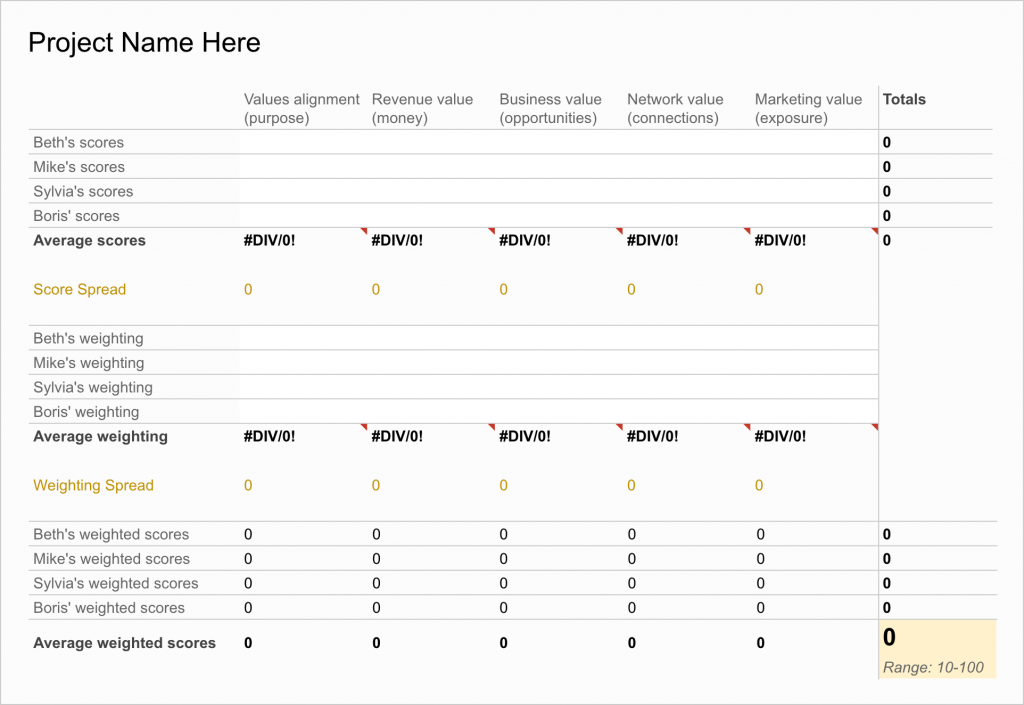
The Criteria
Begin by deciding on a set of criteria that reflect your business values and goals. These must be applicable across all projects. Put some thought into your criteria and get them right because changing criteria from project to project makes apples-to-apples comparisons impossible. I recommend 5 criteria but use your good judgement.
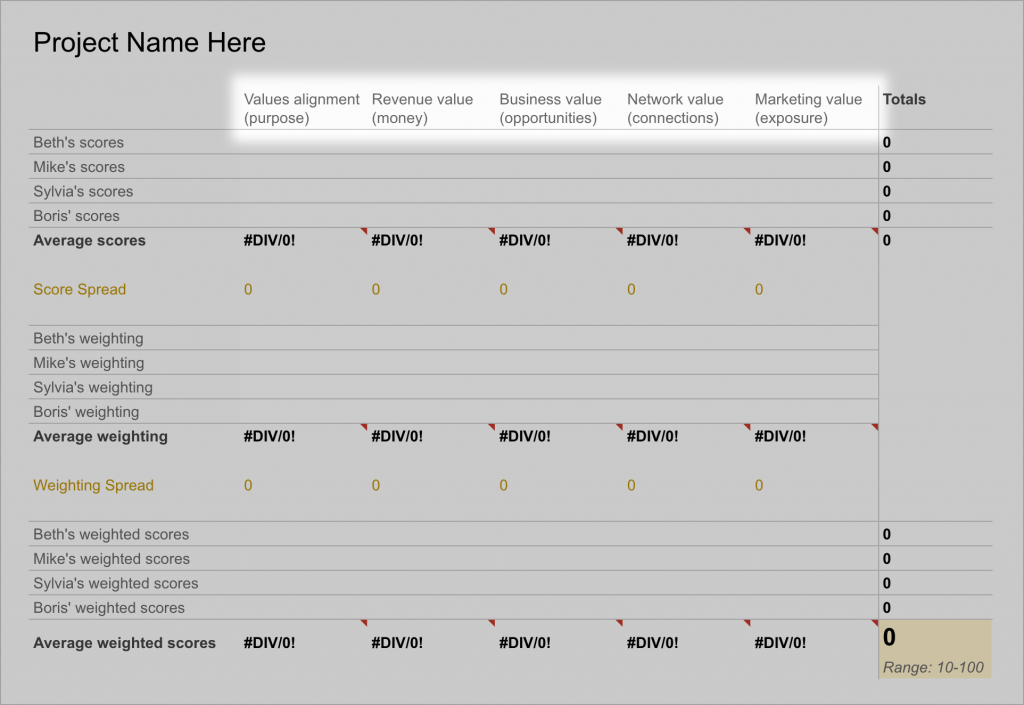
The Scores
Each team member assigns a value of 1-10 to each criteria according to how well they think the project fulfils that criteria. 1=not well, 10=extremely well. These scores are averaged and totalled by the sheet.
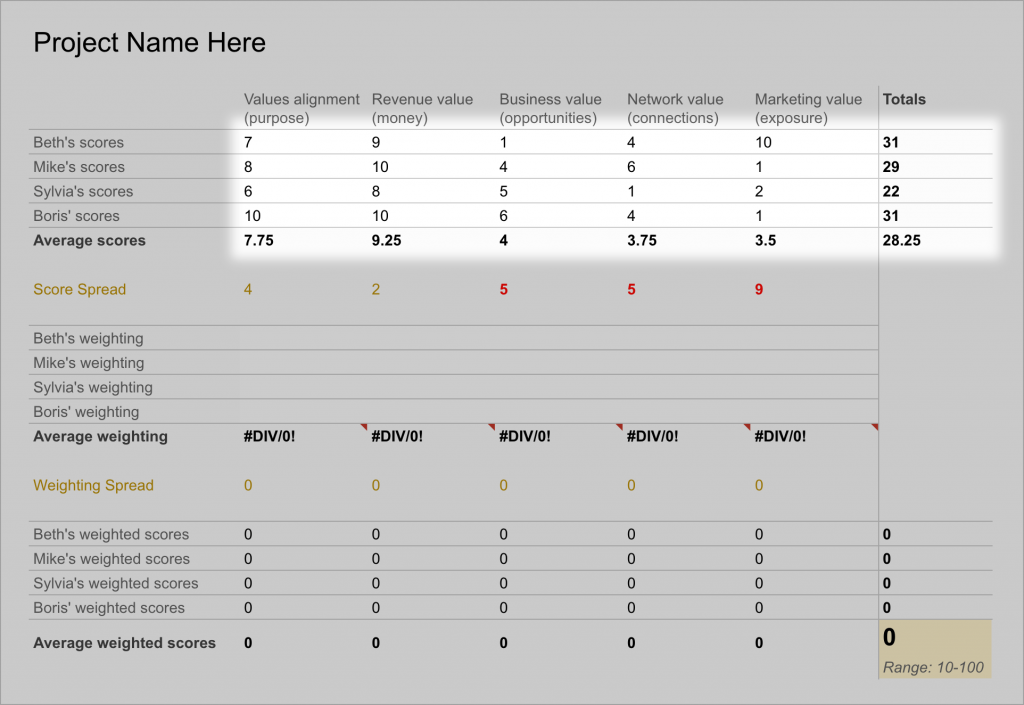
The Weighting
Each team member gets a number of votes equal to 2x the number of criteria, in this case, that’s 10 (2×5). They distribute those votes according to how important they think each of the criteria is overall. These weightings are averaged by the sheet.
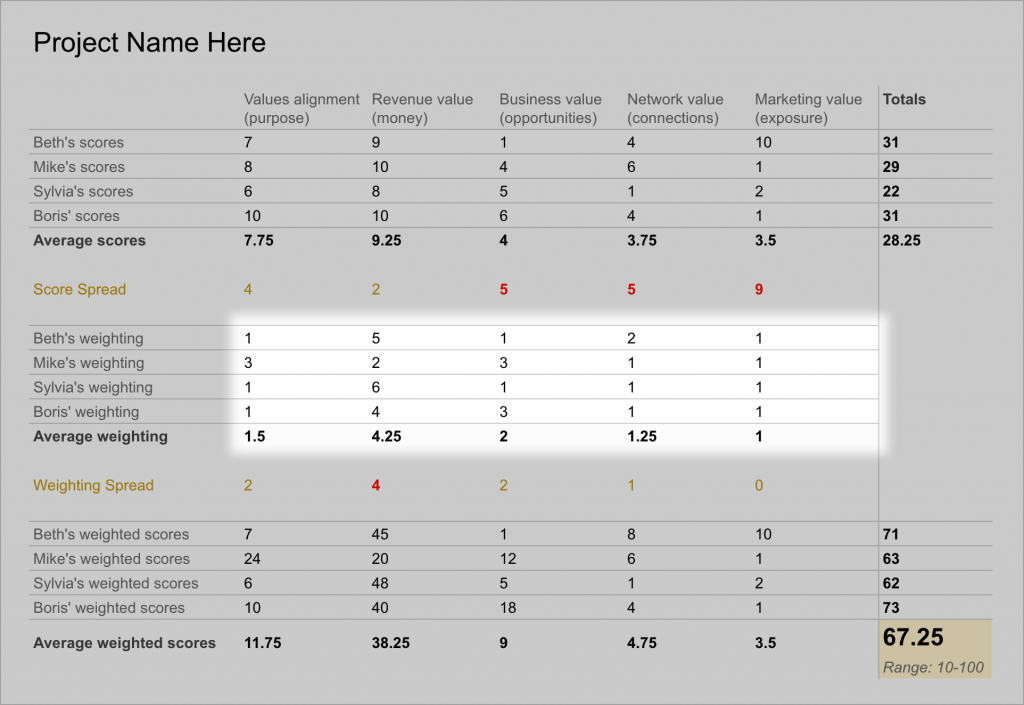
Note that team members can either fill out this scorecard directly in the sheet or via a Google form, although that requires a little extra work to set up. Some people find filling out the form less daunting and it prevents team members from being influenced by each other’s scores and weightings.
The Weighted Scores
The sheet multiplies the scores by the weights to arrive at individual and collective weighted scores by criteria.
It also totals these scores providing a high-level summary of what your team thinks about the project overall.
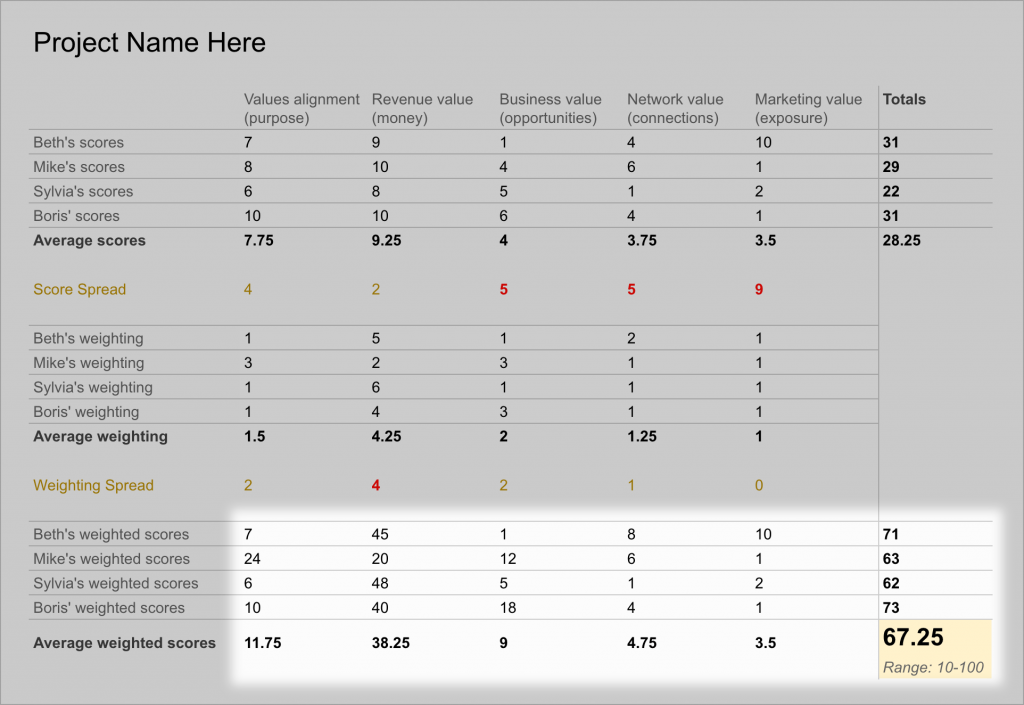
The Spreads
The scorecard also captures the spread between the high and low score/weighting. High numbers indicate a lack of consensus, either on how well a project fulfills your criteria or on the overall importance of a criteria.
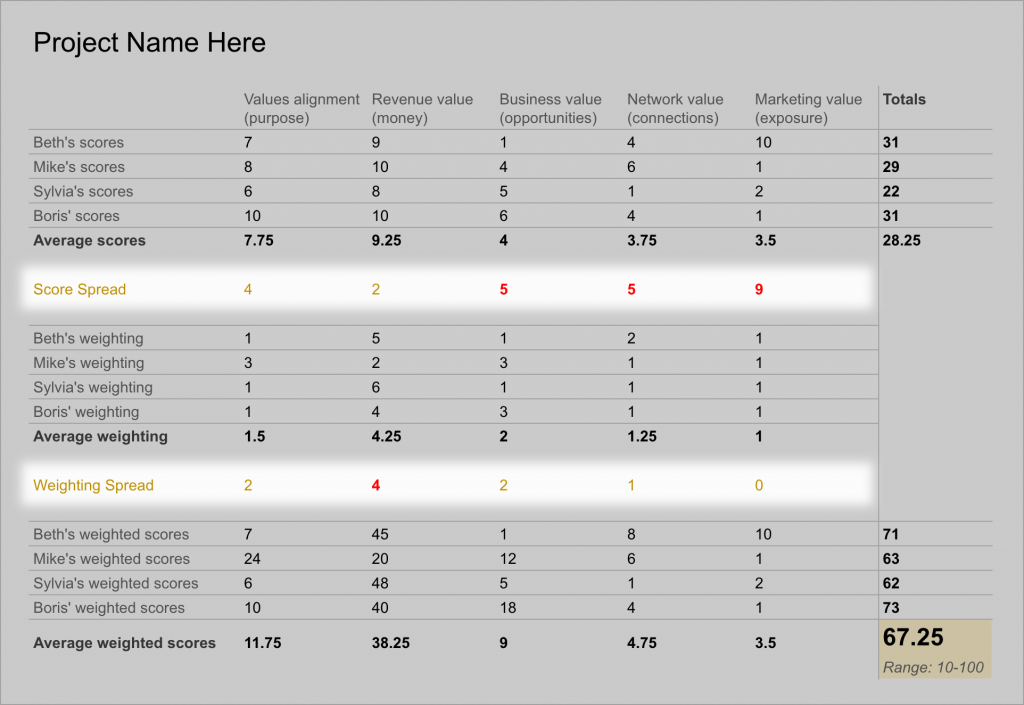
Notes
I’ve found that it can be very useful to re-score projects that are in process to see whether or not the scores and gaps are trending favorably. Re-scoring monthly can yield a lot of valuable insight.
I’ve worked with teams that practice radical transparency and we’ve gone as far as to share our scorecards with the project clients. It’s cheating, however, to share only high scoring cards where the team is perfectly aligned. 😉
Scorecards like these can be used for much more than assessing projects in a business setting. I’ve even used a version for apartment hunting where the “team” is me & my partner and the criteria are things like natural light, parking, proximity to transit, quietness, square footage, etc.
Thanks for reading. I hope you find this tool and technique useful. If you use it with your team, I’d love to hear how it goes. If you see ways of improving it, please let me know.